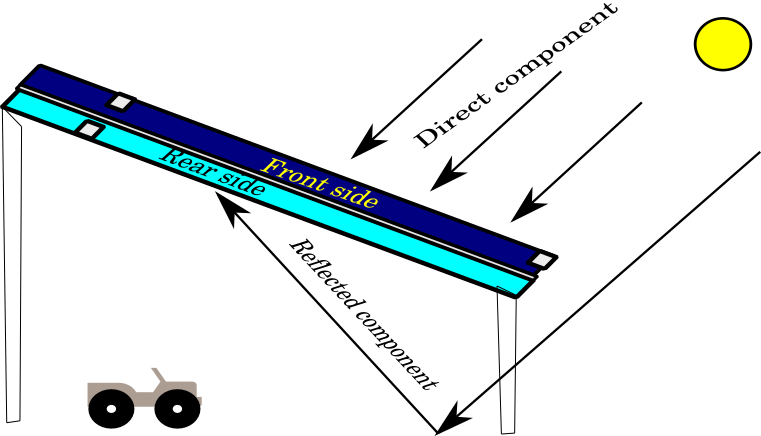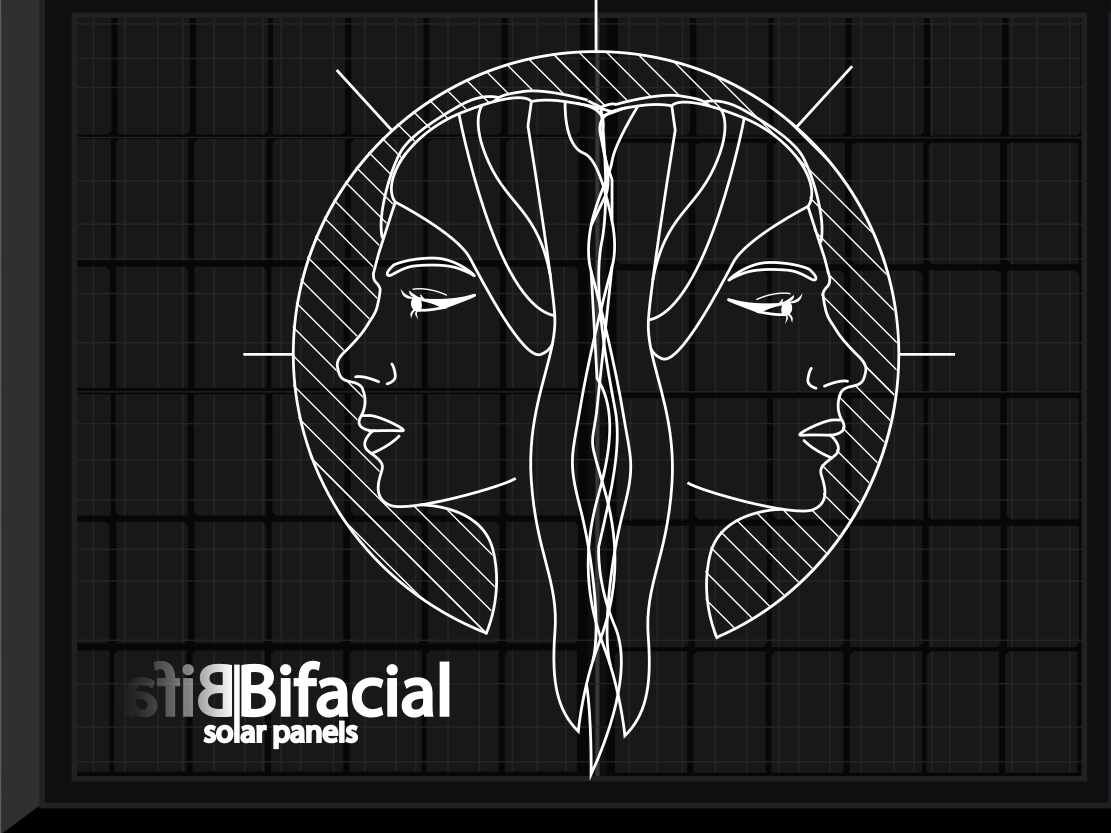Recently, solar panel sellers often offer bifacial panels. What are bifacial panels, and should you invest in them?
Bifacial solar panels: an easy explanation
Break on through to the other side
Sellers of solar panels often call rear irradiation component “diffuse”, although the term is a bit more complicated. Let me immediately clarify the term that I will use later in the text: “diffuse component of reflected light.” For example, when the light enters the room through the window, it is reflected from the walls, furniture, art, and ceiling, and then that component is dispersed – diffuse. The lighting is not the same in a room painted white or a dark color because white has a higher reflection coefficient, and therefore the amount of light in the room is higher. Let’s now consider the reflected component of sunlight, which is scattered when reflected from the environment. The light that falls on the ground around the solar panel is partially absorbed, and the other part is reflected. That effect is explained by Fresnel’s equations.
For users of bifacial solar panels, the second reflective component is interesting. The reflection that reaches the underside of the bifacial panel can be diffuse or specular. Each environment possesses both of these components in varying proportions. For example, silver has a pronounced specular component, while limestone has a pronounced diffuse component. Both types have consequences. However, I will not delve into these complex calculations; instead, I will adopt the reflection coefficient according to the following model:
0.05 water surface (most of the light is transmitted)
0.1 for asphalt (dark surface)
0.12 concrete
0.2 sand
0.26 grass
0.3 forrest
0.6 white sand
0.85 snow
If the surrounding surface on which the panel stand can be painted white (concrete), then the reflection coefficient increases, and thus the reflected light energy on the other side.

Mount propositions
Bifacial solar panels are intended for solar power plants that are mounted. Care should be taken when choosing a location and designing a solar power plant with bifacial panels based on the following facts:
1. Natural environment: choose an environment that has a high reflection coefficient, especially deserts and snow-covered areas.
2. In the case of buildings with canopies (a parking lot), an optimal height is required, but be careful here because with an increase in height, wind gusts increase.
Choose those places that are not exposed to stormy winds. If the parking lot is surrounded by buildings that protect it from the wind, it is necessary to consider the harmful effect of the shadow of the surrounding buildings. In any case, the bifacial panels should be mounted at a height of at least 4 meters from the ground (recommendation) in order to ensure a sufficient amount of reflected light. 3. Panels must be spaced to allow for reflection. The minimum distance between the panels depends on the winter shade or latitude. Some sellers recommend a minimum distance of 6 meters. It is best to do it on large, cheap, and useless areas (desert, meadows, tailings, etc.). Do not consider installing bifacial panels if you cannot meet any of the above conditions on your property.
To invest or not
There is no doubt that bifacial solar panels will increase electricity production. There remains the question of precisely measuring the additional energy generated against the investment costs with all variables accounted for. Various studies have shown that bifacial solar panels can produce additional power ranging from 10% to 20% compared to mono facial panels. At the same time, all the conditions mentioned above must be met (environment and construction).
If you opt for a one-axis tracking solar power plant with seasonal channel adjustment, there is a possibility of gaining additional power of up to 40%.
Studies have shown that a dual-track system (two axis ) can increase energy production somewhat, but its construction and tracking mechanism are expensive. Therefore, the main obstacle to putting bifacial modules on the market is still the difficulty in creating precise calculations and simulations and thereby closing financial inquiries related to additional costs. Precise research into the economic viability of bifacial power plants in practice is important, but quality test results require time. Despite all the obstacles and uncertainties, bifacial installations are currently on the rise, and in the last 10 years alone, the percentage has grown exponentially.
Bifacial modules are predicted to account for 17% of the global solar panel market by the end of 2024. Bifacial panels as light and sound protection on highways On some highways, bifacial panels have been installed as sound and light protection. They are placed vertically or at a certain angle in order to collect some direct light in addition to diffused light. Their effectiveness is still being tested.


2 thoughts on “Bifacial solar panels”
Useful information. What you think about solar power plant De la Sol ?
De la Sol is the first solar power plant in Sebia and contains about 18 000 PV bifacial modules (Canadian Solar) with a power of 0.6 kw. Estimated annual production is about 15000 MW.